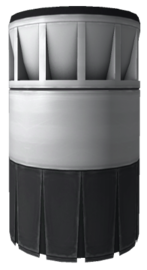Difference between revisions of "J-X4 "Whiplash" Turbo Ramjet Engine"
(*difference between turbofan and turbojet are purely trivia;) |
(Added reference to intake air's flow mode being everywhere) |
||
| Line 1: | Line 1: | ||
{{:TurboJet Engine/Box}} | {{:TurboJet Engine/Box}} | ||
| − | The '''TurboJet Engine''' is an [[Jet engine|air-breathing engine]] which requires [[liquid fuel]] from fuel tanks and [[intake air]]. | + | The '''TurboJet Engine''' is an [[Jet engine|air-breathing engine]] which requires [[liquid fuel]] from fuel tanks and [[intake air]]. It is worth noting the intake air flows everywhere in whole craft so the placement of air intakes on the craft does not matter. |
== Usage == | == Usage == | ||
Revision as of 16:29, 9 July 2014
| J-X4 "Whiplash" Turbo Ramjet Engine | ||
| Jet engine by C7 Aerospace Division | ||
| Radial size | Small | |
| Cost | (total) | 2 250.00 |
| Mass | (total) | 1.80 t |
| Drag | 0.2 | |
| Max. Temp. | 2000 K | |
| Volume | ? | |
| Impact Tolerance | 7 m/s | |
| Research | | |
| Unlock cost | 18 000 | |
| Since version | 0.15 | |
| Part configuration | jetEngineTurbo.cfg | |
| Jet engine | ||
| Maximum thrust | 130 kN | |
| Isp | (max) | 4000 s |
| Fuel consumption | 0.66 | |
| Intake air consumption | 5.30 | |
| Thrust vectoring | 1 ° | |
| Testing Environments | ||
| On the surface | Yes | |
| In the ocean | Yes | |
| On the launchpad | Yes | |
| In the atmosphere | Yes | |
| Sub orbital | Yes | |
| In an orbit | No | |
| On an escape | No | |
| Docked | No | |
| Test by staging | Yes | |
| Manually testable | Yes | |
The TurboJet Engine is an air-breathing engine which requires liquid fuel from fuel tanks and intake air. It is worth noting the intake air flows everywhere in whole craft so the placement of air intakes on the craft does not matter.
Contents
Usage
The TurboJet Engine can provide lots of thrust in high altitudes. At almost all altitudes it generates more thrust than the Basic Jet Engine, but it has a much lower specific impulse at low altitudes.
Trivia
The internal part's name is turboFanEngine which is another kind of jet engine. In real life, a turbojet engine's fan pulls all the air from the intake through a combustion chamber, as opposed to a turbofan in which some of the air sucked in bypasses the chamber and is shot out of the back without being burned at all. The turbojet is more efficient at high speeds and in thinner atmospheres, although turbofans are much quieter and are very efficient when moving slowly. This is why turbofans are almost exclusively fitted on commercial airliners, and turbojets are more common on supersonic planes.
Description
| “ | A standard air breathing engine. This model utilizes an array of rotating fins to enable limited range thrust vectoring. This engine chokes in thick atmospheres and will only operate efficiently in the thinner air, due to its high performance ram air intakes. — C7 Aerospace Division |
” |
Created by: C. Jenkins
Changes
- Initial Release
